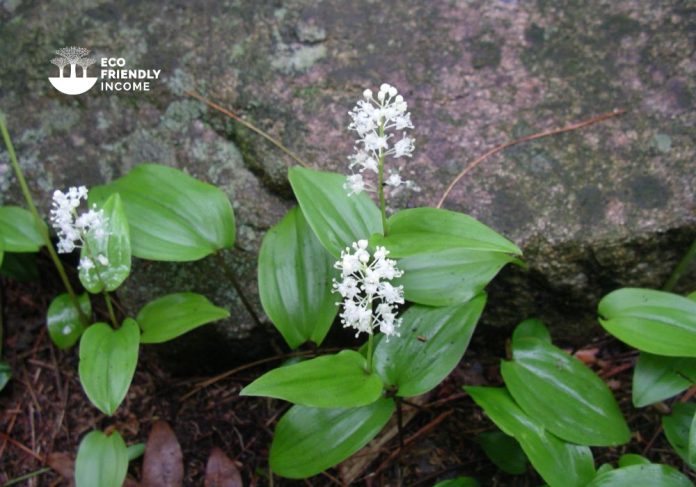A field guide on how to identify and propagate Canada Mayflower (Maianthemum canadense), a hardy zone 2 perennial wildflower that is native to North America.
How to Identify Canada Mayflower (Maianthemum canadense)
Leaves
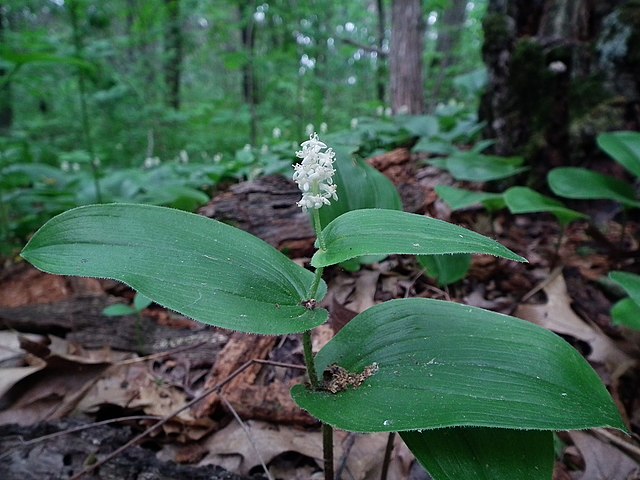
Canada mayflower leaves are elliptical to heart-shaped, with an entire margin (smooth), and grow in an alternate arrangement along the stem.
Flowers
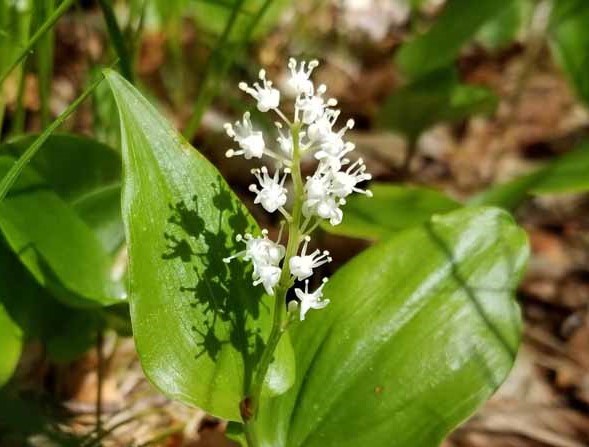
Canada mayflowers produce tiny, white, fragrant flowers that are held in upright clusters on separate, delicate stems. Each flower is 1/8″ long and has two petals, two small, petal-like sepals, and four stamens.
Fruit
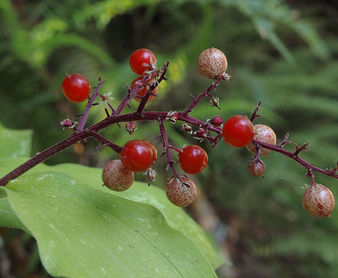
In the later months of summer, flowers transform into small berries that contain one or two seeds each.
When they first form, these berries are green to white and have spots on them, but they eventually turn a mottled dull red in late summer, and then a full dark red in fall.
Each berry is only about 1/8 of an inch wide.
Flowering Season
Canada mayflowers start to bloom from late spring to early summer.
Habitat
Grows in coniferous to deciduous forests, near peat bogs, under old-growth forests, or even in forest beachfronts and sandy plains.
You can find it growing on ridgetops, steep to gentle slopes, rolling hills, and bottomlands.
If you see the following plants, there’s a chance you’ll see Canada Mayflowers:
- Creeping Snowberry (Gaultheria hispidula)
- Bog Cranberry (Vaccinium oxycoccos)
- Peat & Sphagnum Moss (Sphagnum fuscum)
- Quaking Aspen (Populus tremuloides)
- Jackpine (Pinus banksiana)
You can find Canada mayflower all over Canada and in the U.S. as south as Georgia.
Wildlife Value
Canada mayflower offers limited food for wild animals such as grouse, chipmunks, and hares.
Their flowers contain no nectar but can attract insects for their pollen.
How to Propagate Canada Mayflower (Maianthemum canadense)

Hardiness Zone: 2-7

Soil Type: Acidic to neutral clay, loam, sand.

Water: Normal.

Exposure: Partial to Full Shade.
There are two effective ways to propagate Canada Mayflower:
Many wildflowers can be propagated in the same way, since they are non-woody, they often naturally spread by underground rhizomes that can be divided.
Alternatively, they also produce seeds, which we can harvest, that usually self-sow in the fall.
Let’s see how we can propagate Canada mayflowers:
How to Propagate Canada Mayflower (Maianthemum canadense) by Seed
Canada mayflower seeds are inside the fruits, which appear on the wildflower later in the summer and are ready to harvest by fall (Mid to late September).
To harvest the seeds, just wait until the berries are a dark red, then let them air dry to easily harvest the seeds inside.
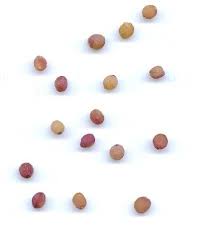
Each fruit contains from 1 to 2 seeds.
Stratification
Canada mayflower will need to go through cold stratification to germinate.
Here’s how:
- Place in a tagged bag with moisten sand into your freezer for 60 days
- Take out of freezer and place into room temperature water for 12 hours.
- Place back into a bag and then into your refrigerator for another 30-60 days.
You can also skip this by simply planting them outside in the fall for them to sprout next spring.
For germination indoors, place into a peat moss medium, moisten and cover with a wrap.
A good half of your seeds should be viable and germinate within a few weeks.
How to Propagate Canada Mayflower (Maianthemum canadense) by Division
Since Canada mayflowers spread vegetatively through rhizome, we can take advantage of that if we’re looking to propagate it.
Rhizomes are thick underground roots that spread horizontally, they look something like this:
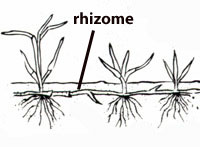
You can divide in two ways:
- Split the clones from the mother plant, transplant them separately and wait until they form new clones.
- Harvest pieces of rhizome without plants attached to them, and get them to root and form leaves.
Your first option is quite easy, as long as your divide only when the plant is dormant (early Spring or Fall).

The second option takes much longer but can give you many more babies than the first option.
- First, when you dig to find the underground rhizome, you want to take a thick piece and split it into cuttings from 1-3 inches long each.
- Next, place those rhizome cuttings inside a container into fresh green moss, or peat moss.
- Then moisten, and keep it humid but never wet or soggy.
- Keep your container covered, in a place away from direct sunlight.
- Finally, leaves will eventually poke through the moss, this is good but it doesn’t mean your cutting has rooted yet.
It can take up to a year for a cutting to properly root and be ready for transplant.
FAQ
Q: What is Canada Mayflower used for?
A: Canada mayflower is a medicinal plant with some useful uses. It’s used as an expectorant, leaves treat headaches, and relieve sore throats when brewed into a tea.
Q: Can you eat Canada mayflower berries?
A: Yes, they are edible but should be eaten in moderation since they are purgative.
Q: Are there any toxic lookalikes to Canada mayflowers?
A: Yes, one should be careful because they closely resemble the toxic Solomon’s seal and non-native lily of the valley.

